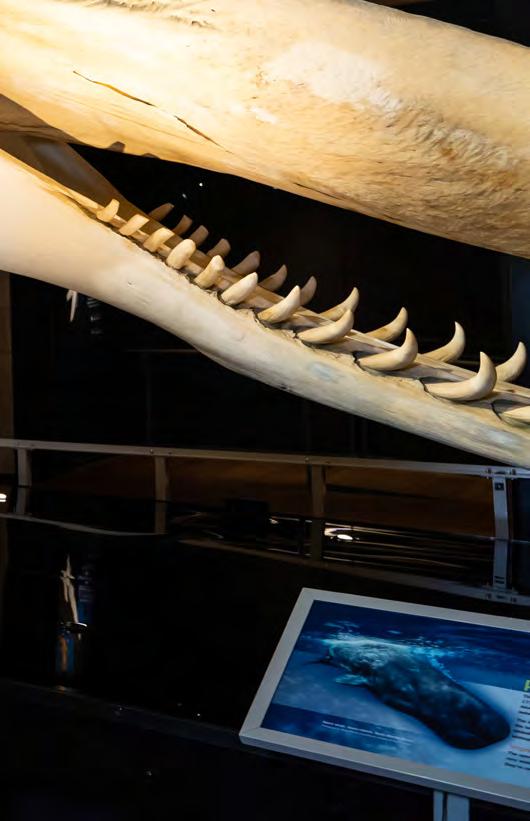
3 minute read
My Museum
Fran Dorey
Acting Manager, Exhibitions
I’m one of those fortunate people who managed to turn a passion for all things old, dead or fossilised into a career. Plus, I love sharing this passion with people, and have followed a path at the Australian Museum that has allowed me to do just that.
My history at the AM is long and varied (I even did my Year 10 work experience here!). Starting as a front-of-house volunteer in 1996, I’ve worked in a number of roles, including education officer, interpretive officer and text writer before moving across to the Exhibitions department as a project manager in 2006. Since then, and in my current role as acting manager, I’ve co-curated and project-managed some of the AM’s most successful permanent and temporary exhibitions including Life Beyond the Tomb (2005), Dinosaurs (2008-), Alexander the Great (2012), Aztecs (2013), Tyrannosaurs — Meet the Family (2014), Trailblazers (2015) and 200 Treasures of the Australian Museum (2017-). The AM’s exhibitions are a primary element of its public face and a key platform through which we promote our science, cultures and collections, and present topics that have societal or global relevance. We feel this responsibility every time we start a project.
Our team includes some of the AM’s most creative, artistic, practical, organised and, dare I say, quirky people. While we’re a relatively large team, we’re spread across multiple projects and work areas including curation, content development, design, fabrication, preparation and maintenance of the AM’s permanent, temporary and touring products. And on every project, we work closely with other departments at the AM, from our conservators, collection managers, and content experts, to education, security, facilities, finance, marketing and sponsorship. It takes a large village to raise an exhibition!

Left: Fran Dorey in Whales | Tohorā at the Australian Museum, 2018. Photo by Nick Langley
So, how do we put together an exhibition from scratch? To go from nothing to a 1000m2 exhibition full of wonderful experiences can seem a minor miracle at times. While it may differ slightly between projects, we essentially follow a tried- and- tested approach: start small and add layers as you go. Initial brainstorming sessions flow on to concept stages and audience testing, which leads to the development of narrative flow and an appealing interpretation, which is folded into design, look and feel, and finally, leads to creation, build and install.
Of course, as with most jobs, there are always the ‘boring’ parts — meetings, budgets, schedules, plans, procurement and contracts. No one seems that interested in these aspects of exhibitions! However, sometimes it’s good to sit down and focus on the mundane while your brain is ticking over— often it will find a solution to a challenge.
What kind of challenges do we face? Well, we’ve had to get a 12m-long, latex T. rex into the building, design and fabricate a bouldering wall, move a set of antique sculptures weighing 1 tonne each, negotiate insurance contracts in other languages, find a city hotel for dogs, collect and weigh elephant and lion poo, and house and feed venomous spiders.
The highlights are many, too. As part of my job, I have wielded Captain William Bligh’s sword, held an Aztec sacrificial knife, excavated dinosaur fossils, been bitten by a baby crocodile and come face- to- face with Egyptian mummies.
All of these experiences fill me with awe, wonderment and child-like joy. Hopefully, we impart some of these emotions in our exhibitions. There is a very real human need for engagement and authenticity that transcends the digital world and there are few places you can still connect to the past, understand the present or imagine the future —our Museum remains one of those places.










